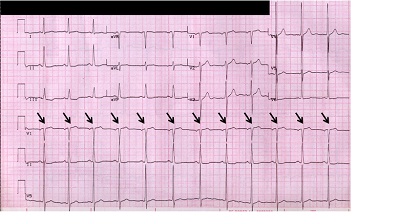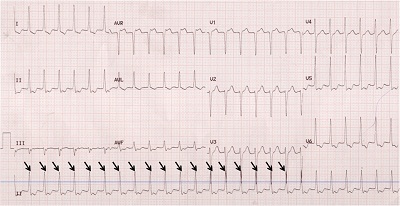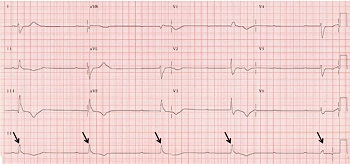ECG
An electrocardiogram (ECG) records the electrical activity of the heart, allowing detection of normal and abnormal heart rhythms. Sticky patches on put on the arms, chest and legs, and a trace of the electrical activity is recorded; it is a quick and non-invasive test and can immediately help with diagnosis of lots of heart rhythm problems. It is important to be aware that, just because the ECG is normal, it does not mean that there is no chance of a heart rhythm problem.
Example of a normal ECG (sinus rhythm):

This ECG tracing shows a regular rhythm - note the sharp spikes which effectively corresponds to each heart
beat (marked with arrows) occuring at regular intervals. The heart rate on this ECG is normal
Example of an ECG where the heart is going very fast (tachycardia)

ECG where the heart is going very fast (tachycardia): The sharp spikes correspond to heart beats as in the normal ECG (marked with arrows) and now are much more frequent and faster than the normal ECG above. In fact they are about 3 times as fast with a heart rate of over 180 beats per minute.
Example of an ECG where the heart is going very slowly (bradycardia)

ECG where the heart is going slowly (bradycardia): On this ECG the spikes (marled with arrows) are a long way apart and the heart rate is very slow - less than 30 beats per minute.